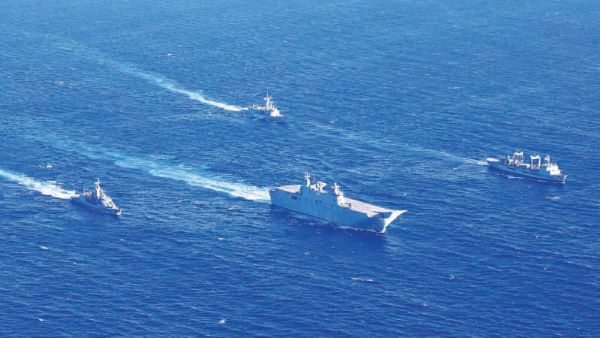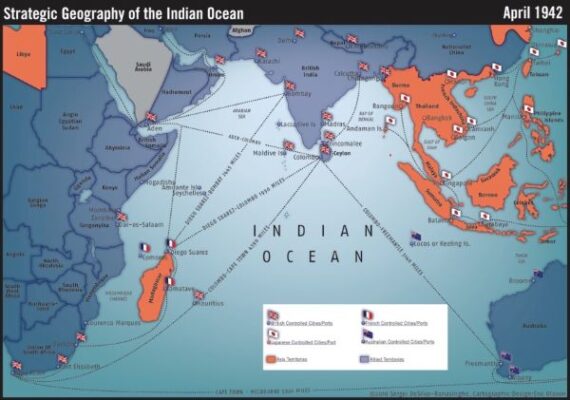Australia and Sri Lanka Naval Cooperation in the Indian Ocean: prospective extensive collaboration
By Arundathie Abeysinghe
 Australia and Sri Lanka have a robust and enduring bilateral relationship of 74 years since the establishment of diplomatic relations in May 1947. The Asia Pacific Nation and South Asian Island have close foreign relations from May 1947 to date.
Australia and Sri Lanka have a robust and enduring bilateral relationship of 74 years since the establishment of diplomatic relations in May 1947. The Asia Pacific Nation and South Asian Island have close foreign relations from May 1947 to date.
Australia’s expanding naval footprint in the Indian Ocean and Sri Lanka’s strategic location in the Indian Ocean Region (IOR) as well as naval engagement between Canberra and Colombo indicates the expansion of maritime relationships across the Indo-Pacific which has transpired as a new geopolitical theatre.
Australia’s defense cooperation with Sri Lanka since March 2019 indicates the stable development of intra-regional security collaboration in IOR. As such, on March 11, 2019, a Joint Task Force of four Royal Australian Navy ships, the Royal Australian Air Force as well as 1,000 military personnel arrived in Sri Lanka for the *Indo Pacific Endeavor (IPE) 2019 exercises. According to Air Commodore Richard Owen, Commander of the Task Force, this first stop in the IPE19 mission is a significant milestone due to Sri Lanka’s strategic location.

This endeavor showcased interoperability and coordination of humanitarian and security responses with countries in IOR as a series of maritime ventures took place during the visits to ports in Sri Lanka, India, Singapore, Thailand, Vietnam, Malaysia and Indonesia for a three-month period. During the port visits in Sri Lanka, HMAS Canberra and HMAS Newcastle were docked at Colombo Port, whereas HMAS Parramatta and HMAS Success charted to *Trincomalee Port.
The visit of the Australian ships HMAS Parramatta and HMAS Success to Trincomalee emphasizes the international spotlight on the strategically located port city of Sri Lanka’s east coast.
During the IPE 19, the naval forces of Australia and Sri Lanka were engaged in nautical operations, helicopter exchanges, disaster as well as humanitarian relief operations, Canberra’s largest defense engagement with Sri Lanka.
During the past, the two countries focused on collaboration activities such as people smuggling, whereas after IPE 19, the endeavors focused on strategic ventures, a change from irregular and isolated engagement to a consistent and regular methodology in IOR under the context of the Indo Pacific endeavors.
The endeavors of Canberra in the IOR is not a recent venture, instead it was manifested during late 1990s also, with its proposals to promote the *Indian Ocean Rim Association (IORA).
According to Australia’s Defense White Paper 2016, “Sri Lanka’s location on a vital maritime corridor in the Indian Ocean has seen Australia gradually increase defence cooperation, including establishing a resident Defence Adviser in Colombo.” Hence, Australia’s security relies on a “stable Indo-Pacific region and a rules-based global order”.

This concept is further emphasized in the 2017 Foreign Policy White Paper (which describes Australia’s interest in naval collaboration with Sri Lanka): “We No. 645 – 5 April 2019 2 will deepen joint exercises and build maritime domain awareness with India and collaborate on maritime safety and security with other Indian Ocean partners, like Sri Lanka.”
Meanwhile, Sri Lanka also has a keen interest to deepen its naval as well as maritime engagement with Canberra with the objective of boosting its Indian Ocean identity.
According to Sri Lanka’s former Foreign Minister Mangala Samaraweera, who stated in 2015: “Reclaiming our Indian Ocean identity helps us and others unlock the tremendous opportunities for attracting FDI, accessing markets and developing our tourism industry.”
As the Indian Ocean surfaces as a significant strategic area and due to Sri Lanka’s geostrategic location at the crossroads of major shipping routes to South Asia, the Far East as well as the continents of Europe and America as well as its strategic location among the most significant sea lines of communication (SLOC), Colombo will be a focus for greater political attention in future.
Growth of Australia’s naval endeavors as well as security operations with Sri Lanka indicates developing bilateral, trilateral and multilateral endeavors and rising competitive geopolitical significance of the IOR.
As such, Canberra hopes to expand its strategic footprint in littoral states of IOR and Colombo hopes to maximize its geostrategic location in the Indian Ocean.
- Indo-Pacific Endeavor 19 (IPE 19) – During this endeavor, the Australian Defense Force (ADF) engaged in a series of military training exercises in South and Southeast Asia. During the IPE 19, the first port for the flagship of the group for landing helicopter dock HMAS Canberra was Colombo.
- Indian Ocean Rim Association (IORA) – A dynamic inter-governmental organization set up with the objective of strengthening regional cooperation and sustainable development within the Indian Ocean Region (IOR), through the Association’s 23 member states and nine dialogue partners. Founded in 1995, initially, IORA was known as the Indian Ocean Rim Initiative and the Indian Ocean Rim Association for Regional Cooperation.
- Trincomalee – Situated on one of the world’s finest natural and beautiful deep-water harbors, Trincomalee is a port city located on the northeastern coast of Sri Lanka. Trincomalee has attracted seafarers, traders as well as pilgrims from Europe, Australasia, East Asia, Africa, China and Middle East for several decades.
Image courtesy: lankaimage.com & navalinstitute.com.au







